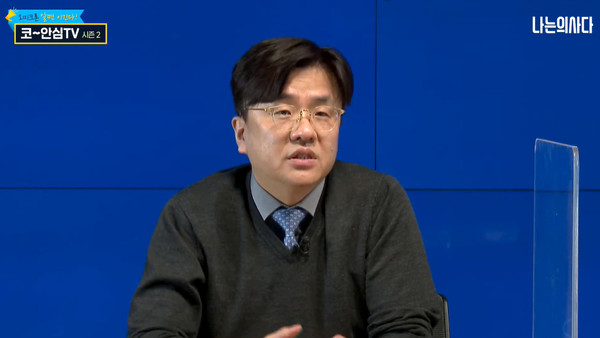Many epidemiological experts say that the quarantine authorities should focus on severely ill Covid-19 patients instead of the spread of the Omicron variants itself, citing the strain’s relatively lower mortality rate.
However, according to some experts, there are some risks in this strategy.

Appearing at a special live broadcast on Monday, professors at university hospitals warned against the possible collapse of the medical system, as an increasing number of doctors, nurses, and other workers at large hospitals were confirmed as patients.
If the current trends continue, many hospitals will not be able to receive patients due to manpower shortages, they said. Moreover, suppose the government fails to control the Omicron variant’s spread while remaining complacent with their low severity and fatality. In that case, it could result in the collapse of essential social facilities, including medical and educational institutions.
The live show was produced and released jointly by the Seoul Metropolitan Government and “I Am a Doctor,” a podcast aired by The Korean Doctors Weekly, the sister paper of Korea Biomedical Review.
“It is becoming more and more difficult to defend the hospital. Our infection control room is going back to the 24-hour operating system,” Professor Eom Jung-shik of Gachon University Gil Hospital said. “We are facing a situation where we cannot determine the boundaries of defense. The number of in-hospital infections is increasing by the day.”
Eom echoed the concerns expressed by Professor Kim Sun-bin of the Korea University Anam Hospital at the same live broadcast three days earlier.
“As more and more medical workers get infected with the coronavirus, we are racking our brains whether to alienate them or let them continue to work out of concerns about manpower shortage,” Kim said last Friday.
The government is not exactly sitting idle, however. Last Wednesday, the Central Disaster Management Headquarters and the Central Disease Control Headquarters unveiled guidelines for hospitals' Business Continuity Plan (BCP) to prepare for in-hospital infections of medical workers.
In the BCP-3 stage, when the daily virus cases exceed 50,000, medical workers who show no or mild symptoms after breakthrough infection can continue to work with KF94 masks if they test negative in the rapid antigen test after three days quarantine. Fully vaccinated medical workers could work without isolation even if they contacted infected people.
Medical institutions can hire new workers urgently, and the government dispatches army surgeons, public health doctors, and nurses to these institutions.
However, some experts point out that it is not easy to directly apply the BCP guidelines to the medical fields. Others say the scale of infection has already passed the level that medical institutions can manage.
“As hospital employees get infected, some departments cannot receive in-patients,” said Professor Lee Jae-gap of the Hallym University Gangnam Sacred Heart Hospital. “We want to apply BCP but find it not easy to do so in areas where the division of roles is clear and have difficulties finding alternative workforce.”
Lee said he had expected that if the daily infections surpassed 50,000, it would cause some cracks in essential social facilities. “Now, such cracks began to be shown in some frontline hospitals, and the situation is aggravating as infections spread to hospitals and nursing facilities,” Professor Lee added.
Noting that the cracks that began in medical institutions could spread to other essential social facilities, including schools, Lee emphasized that now is not time to relax quarantine restrictions.
“If things continue like this, it will be difficult to start a new semester in March,” Lee said. “What’s happening now will occur in schools, too. If five or six teachers in a grade fail to report for work due to breakthrough infection, it will be difficult to operate the whole grade.”
Lee criticized the government for moving to ease social distancing rules based on a relatively smaller number of severely ill patients. If the quarantine authorities relax viral curbs and confirmed cases soar, it would lead to the possible stops of essential social facilities, he warned.
Professor Lee stressed that the government should try harder to curb the spread of the Omicron variants to prevent damage to essential social services.
“If the Delta variant was a ‘stress test’ about severely ill patients, the Omicron variant is the stress test about mild or moderate patients. Unfortunately, however, the government has already failed the test, unable to manage increased patients appropriately,” Lee said.
Lee reemphasized that the situation is too risky to remain complacent with the slow rise in severely ill patients.
“The ripple effects from the infection of people working at essential social facilities are getting bigger and bigger,” he said. “The government should control the spread while preparing for such effects.

